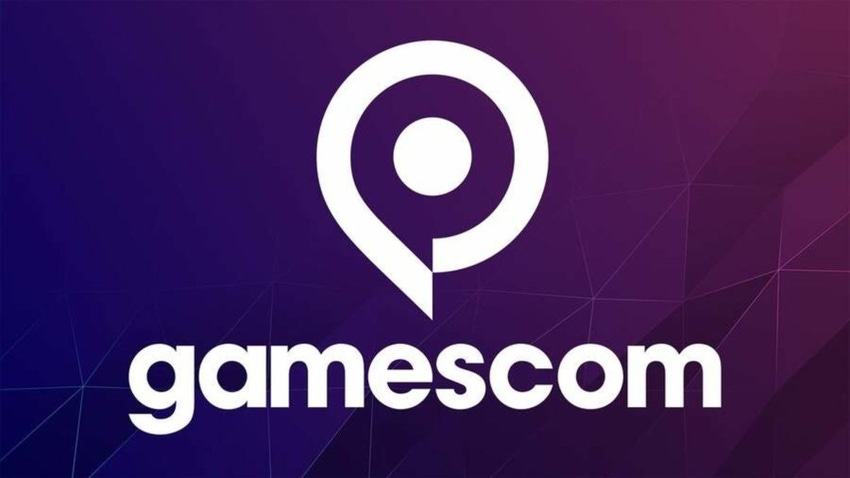
Featured Blog | This community-written post highlights the best of what the game industry has to offer. Read more like it on the Game Developer Blogs.
Omdia analysts discuss key trends at Gamescom 2022 including the reduced presence of key console players, accelerating interest in the role advertising is poised to play in the games industry, and ByteDance’s rise to prominence in gaming and VR.

Console’s prominence diminished at Gamescom 2022
For years, three of the largest exhibitors at Gamescom have been incumbent console manufacturers Nintendo, Sony, and Microsoft, all of which tend to use the event to promote their latest hardware and upcoming exclusive first-and-third-party titles. However, two of these industry giants were conspicuous by their absence in Cologne this year: Nintendo and Sony had no physical presence at the show at all. Microsoft was present, but its presence on the show floor was about half the size as it was in 2019 - when the last physical show took place in 2019 before the COVID pandemic put a halt on in-person events. Indeed, some companies remain understandably reticent to send representatives to, or invest heavily in showcasing at, events like Gamescom during a period of unprecedented ongoing uncertainty. But, arguably, with Starfield’s release being pushed back to 2023 and the ongoing saga of its acquisition of Activision Blizzard, Xbox had the least reason of the three to exhibit: the imminent September 2022 release of Pokémon Scarlet and Violet, and the scheduled November 2022 arrival of Sony’s flagship 4Q22 first-party title God of War Ragnarok would, in previous years, create a huge buzz in Cologne. Instead, their absence at the show painted a bleak – if admittedly incomplete – picture of the current state of the console market.
Fittingly, the relative silence at this year’s show this also coincides with a distinct slowdown in the console space, with all three manufacturers reporting lower-than-expected engagement and year-on-year declines in some console segments during H2 2022. Some correction was, of course, expected following the pandemic-induced gaming boom but other factors – such as hardware supply limitations, especially in Sony’s case – have exacerbated stagnation in the space. To compound things further, the market-leading Switch has now very much entered the decline phase of its lifecycle, meaning that it is no longer a driving force of growth it once was.
Omdia is seeing evidence of PS5 supply starting to catch up with demand in some key markets, and expects a return to some semblance of normality in 2023. However, inflationary pressures and currency movements have forced Sony to increase the recommended price of the PS5 in select markets, including the UK, Europe and Japan. While this is not expected to impact Omdia’s existing PS5 volume sales forecast, which remain dictated by supply levels rather than demand, it will represent an $87.5m increase in expected hardware revenue in 2022 for Sony compared to our previous forecasts. In 2023, the revenue uplift arising from PS5 price increases will be approaching $400m. Even so, the console segment as a whole – including hardware, software, add-on content, and online subscriptions – will decline by 2.5% this year compared to 2021, which itself saw a 4.5% decline on 2020’s record-breaking performance.
Yet there is light at the end of the tunnel: Omdia expects the console market to return to pre-pandemic growth cadences in 2023, when it will expand by 5.3% to once again surpass $40bn. Let’s hope that, as the console market starts to resemble its former, pre-pandemic self, as will the Gamescom expo in 2023.
B2B mood upbeat—particularly in ad tech
While the B2C show floor at Gamescom 2022 was notably reduced in scale compared to previous years, the business area was buzzing with activity. The increasing complexity of the games tech ecosystem highlighted in Omdia’s recent Games Tech Market Landscape Database was very much in evidence, with a large share of the 237 companies profiled in that database in attendance. Particularly noticeable was the large presence of companies like AWS and Xsolla, which are emerging—in very different ways—as key pillars of the ecosystem.
But perhaps the most striking development on the B2B side this year was the growth of advertising. At the last Gamescom in 2019, there were few ad tech companies to be seen. At the time, in-game advertising was a sufficiently novel topic that the few companies in the space were mainly focused on raising awareness. Fast forward to 2022, and we see a far more mature market with the likes of AdInMo, Anzu, Bidstack, and more attending to do business—not just to get their names out.
The mood among the in-game advertising companies Omdia spoke to was upbeat despite the recent downturn in the broader gaming market. The surprise announcement in June that Admix, once a leading in-game advertising player, was pivoting away from advertising had also done little to dampen expectations. Across the board, the feeling was that the market was gaining real traction. The recent publication of measurement standards for in-game advertising by the Internet Advertising Bureau (IAB) has helped to bring standardization and legitimacy in the eyes of advertisers. Indeed, the heavy presence of in-game ad players at Gamescom suggest the focus is shifting from winning over advertisers to persuading game developers. This was further evidenced by a straw poll by Omdia among in-game advertising companies at Gamescom which found that almost all were investing far more resources in Gamescom than DMEXCO, an upcoming advertising industry event at the same venue.
Despite the ongoing turbulence in both the games and digital advertising market, there are many reasons for optimism about their intersection, in-game advertising. The mobile games advertising market is adapting fast to the upheaval of IDFA, in part by shifting towards new formats like rewarded and in-play advertising. Meanwhile, the rumored launch of new advertising platforms for both PlayStation and Xbox next year looks set to bring a major boost to advertising on traditional gaming platforms, while TV manufacturers such as Samsung are starting to make more noise about their ability to track, measure, and target gamers across their devices. Omdia will be exploring all of these trends in detail in the forthcoming In-Game Advertising Forecast which will provide the first comprehensive quantification of this rapidly emerging market.
ByteDance reaffirms its commitment to gaming and VR
ByteDance’s presence at Gamescom was impossible to ignore. A large TikTok booth (at 650 square meters) stood by the entrance to one of the central halls of the show, with a big stage and gameplay area. Popular German and English-speaking TikTokers hosted a packed program, which included exclusive gameplay of Capcom’s upcoming Street Fighter 6. Additionally, games from Capcom, Konami, Sega, and Warner Bros. were available to play. TikTok also had a sizeable presence in the B2B area. Meanwhile Pico, which ByteDance acquired in 2021, was the only VR headset maker exhibiting at the show – it showcased two games running on Pico Neo3 Link standalone VR headsets. Gamescom was timely for Pico, which earlier this year announced expansion of its business activities and device sales in the US and Europe.
It’s not new for media companies to exhibit at Gamescom, with a notable example being Netflix in 2019. However, in contrast to Netflix in 2019, ByteDance already has an advanced involvement in the gaming space across multiple fronts. Since 2020, it launched Danjuan Games in China – a storefront dedicated to mobile titles and inaugurated its own indie game publishing arm Pixmain. Most notably, in 2021, ByteDance acquired Moonton Games for $4 billion – the company’s biggest gaming acquisition thus far.
According to Sensor Tower data, ByteDance-owned mobile games generated 142 million downloads and $461 billion in net revenue globally in 2021 (Moontoon Games’ Mobile Legends: Bang Bang was responsible for about half of those). ByteDance has also recently started experimenting with casual in-app games on TikTok. In select markets, TikTok users can play and record themselves playing nine different HTML5 games via its new ‘MiniGame’ section. Earlier this year, TikTok confirmed that it is exploring bringing more games through integrations with third-party game developers and studios.
With a strong showing at Gamescom, ByteDance has underlined its ambitions in gaming and VR. Although TikTok will offer more playable games in-app, Omdia believes that ByteDance’s primary focus will remain making TikTok a key destination for games-related video content in order to drive the engagement and ad revenue on its platform. On the VR front, many will welcome the increased competition in a device category increasingly dominated by one company; according to Omdia’s Consumer VR Headset and Content Revenue Forecast 2021-2026, Meta accounted for 59% of VR headset sales globally in 2021. ByteDance’s healthy finances and proven expertise in the tech space makes it one of the top companies to watch in gaming.
Further reading
Games Console Content & Services Database (August 2022)
Games Tech Market Landscape Database – August 2022 (August 2022)
“As Admix Pivots to Web3, is there still a future for in-game advertising?” (June 2022)
Consumer VR Headset and Content Revenue Forecast Report: 2021-2026 (January 2022)
About the Author(s)
You May Also Like










